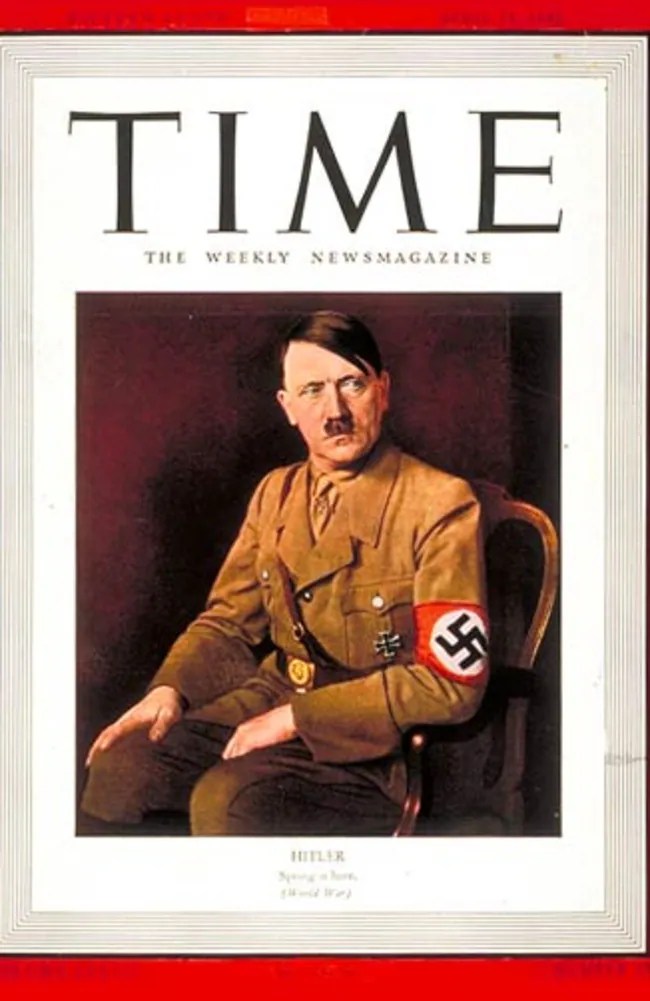Time Magazine has long been a significant player in shaping public opinion and historical narratives. Among its many controversial covers and stories, none has sparked as much debate as the portrayal of Adolf Hitler. The magazine's ability to capture the essence of pivotal moments in history has made it a valuable resource for understanding the past, and Hitler's depiction within its pages offers a unique glimpse into how the world viewed this infamous figure during his rise to power and beyond. This article aims to explore the relationship between Time Magazine and Adolf Hitler, examining how the magazine addressed the complexities of his leadership and the impact of his actions on the world stage.
As one of the most reviled figures in modern history, Adolf Hitler remains a focal point for discussions on totalitarianism, war, and human rights violations. Time Magazine's coverage of Hitler serves as a lens through which we can analyze the media's role in shaping perceptions of political leaders. From the moment Hitler rose to prominence, the magazine tracked his every move, providing insight into not just his ideology but also how it resonated with the populace and influenced global politics. This exploration will delve into the various articles, covers, and editorial decisions made by Time Magazine that spotlighted Hitler's controversial legacy.
Moreover, understanding Hitler's portrayal in Time Magazine is essential for grasping the broader context of the 20th century. The articles and imagery used by Time were not merely journalistic endeavors; they were part of a larger narrative that aimed to inform and sometimes misinform the public about the dangers posed by Hitler's regime. This article will dissect the nuances of Time Magazine's coverage, revealing the complexities and contradictions inherent in reporting on such a polarizing figure.
What Was Adolf Hitler's Early Life Like?
Adolf Hitler was born on April 20, 1889, in Braunau am Inn, Austria. He was the fourth of six children born to Alois Hitler and Klara Pölzl. Hitler's early life was marked by a tumultuous relationship with his father, who was stern and often abusive. His mother, however, was more nurturing and supportive. After his father's death in 1903, Hitler moved to Vienna, where he struggled to make a living as an artist. This period of his life was crucial in shaping his worldview and future political ambitions.
What Were the Key Events That Led to Hitler's Rise?
Several significant events contributed to Adolf Hitler's rise to power in Germany:
- The aftermath of World War I and the Treaty of Versailles, which imposed severe reparations on Germany.
- The economic instability and hyperinflation that plagued Germany in the 1920s.
- The formation of the National Socialist German Workers' Party (NSDAP) in 1920.
- Hitler's appointment as Chancellor of Germany in January 1933.
How Did Time Magazine Portray Hitler During His Rise?
During Hitler's ascent to power, Time Magazine began to cover him as a significant political figure. Initial reports were often cautious, acknowledging his popularity among the masses while cautioning against his extremist views. The magazine's portrayal evolved over time, reflecting the shifting sentiments in both the United States and Europe. As Hitler consolidated power, Time's coverage increasingly focused on the dangers posed by his regime, offering a critical lens on his actions and policies.
What Was the Impact of Time Magazine's Coverage on Public Perception?
Time Magazine's portrayal of Adolf Hitler had a profound impact on public perception, particularly in the United States. The magazine was widely read and influential, often shaping the opinions of its readers. As World War II approached, Time's articles highlighted the growing threat of Nazi Germany, contributing to a sense of urgency among American citizens regarding the need to confront fascism. The magazine's coverage also played a role in rallying support for intervention in the war.
How Did Time Magazine Address the Horrors of the Holocaust?
Time Magazine's coverage of the Holocaust was met with mixed reactions. While the magazine reported on the atrocities being committed against Jews and other marginalized groups, critics argued that it did not do enough to raise awareness or mobilize action. Some articles focused on the plight of refugees and the moral implications of inaction, while others highlighted the complicity of various nations in allowing the Holocaust to occur. This duality in reporting reflects the challenges faced by journalists in covering such a complex and sensitive topic.
What Legacy Did Time Magazine Leave in its Coverage of Hitler?
The legacy of Time Magazine's coverage of Adolf Hitler is one of complexity and reflection. On one hand, the magazine played a crucial role in informing the public about the dangers of totalitarianism and war. On the other hand, it faced criticism for its timing and framing of stories, which sometimes downplayed the urgency of the Nazi threat. This duality serves as a reminder of the responsibility that media outlets have in shaping historical narratives and public understanding.
Conclusion: What Can We Learn from Time Magazine's Portrayal of Adolf Hitler?
Examining Time Magazine's coverage of Adolf Hitler provides valuable insights into the role of media in shaping public opinion and historical narratives. It highlights the importance of critical journalism in times of crisis and the need for responsible reporting on political leaders. As we reflect on the past, it is crucial to engage with these narratives, understanding their implications for our present and future. The lessons learned from Time's portrayal of Hitler serve as a reminder of the importance of vigilance and the power of informed discourse in the face of tyranny.
A Deep Dive Into Amanda Serrano's Net Worth In 2024
Unveiling The Life Of Exodus Tyson: A Journey Beyond The Ring
Halsey: The Journey Of A Single Mum


